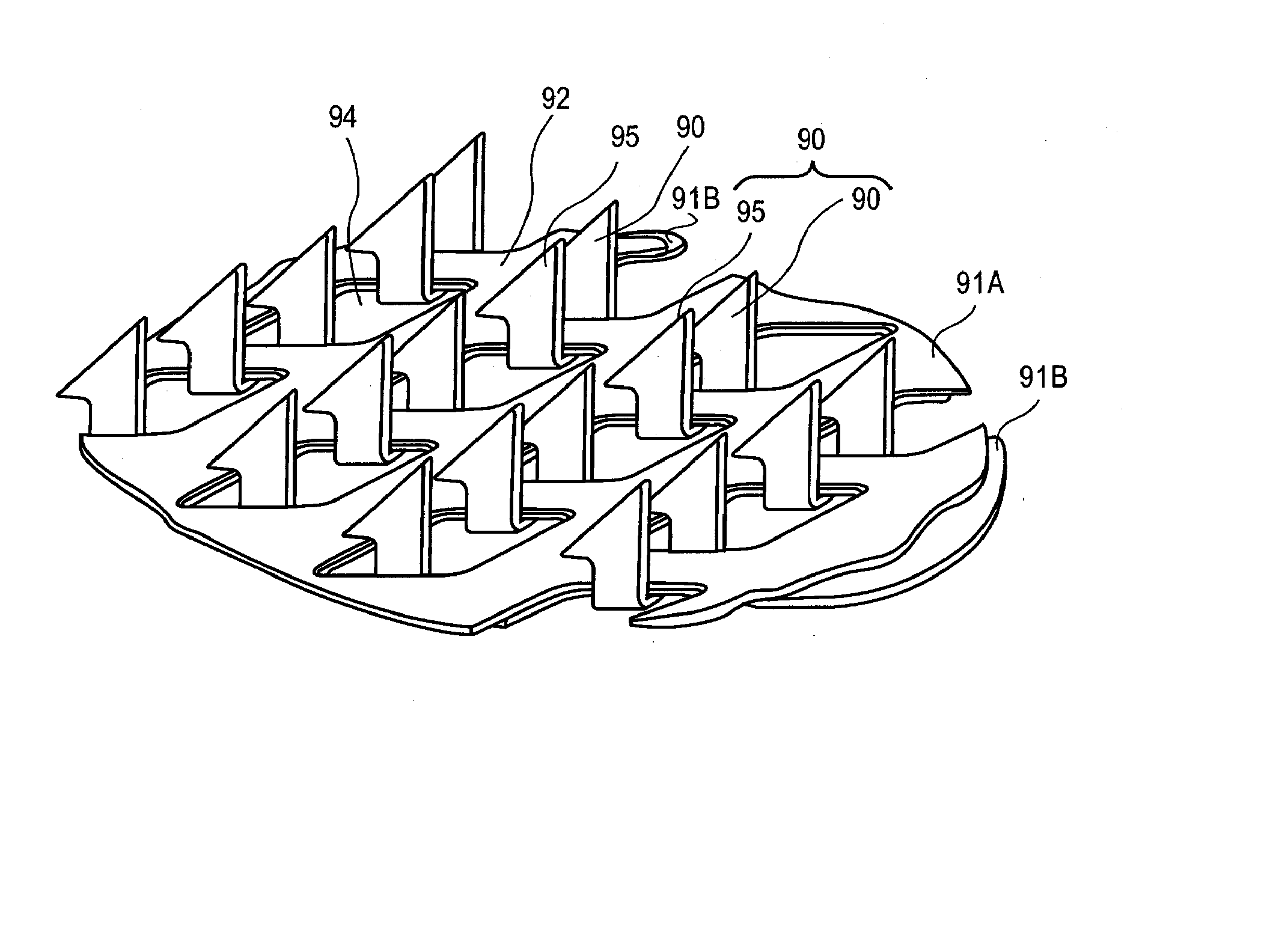Microprojection array application with multilayered microprojection member for high drug loading
a technology of microprojection array and high drug loading, which is applied in the field of microprojection array with high drug loading thereon, can solve the problems of insufficient rate of delivery or flux of polypeptides through the skin, insufficient drug loading, and inability to efficiently deliver drugs and pharmaceutical agents through conventional passive patches or electrotransport systems through intact body surfaces. achieve the effect of improving drug loading, improving drug loading, and improving the capacity of microprojection
- Summary
- Abstract
- Description
- Claims
- Application Information
AI Technical Summary
Benefits of technology
Problems solved by technology
Method used
Image
Examples
example 1
[0129]FIG. 12 shows a photograph of an microprojection array having microprojection pairs with drug coating, made by stacking two layers of microprojections together wherein the microprojections of the bottom base layer protrude through the window openings in the top microprojection base layer. The microprojection member was made by chemically etching a titanium substrate to obtain microblade arrays 2 cm2 in size and 25 μm thick with methods known in the art to form arrowheaded microblades and stacking two microblade arrays to form a microprojection member.
[0130] A first substrate titanium sheet a little thicker than 25 μm was coated with photoresist, imaged for a pattern to form microblades and chemically etched with an etching solutions, such as ferric chloride solution, known in the art. The patterned polymer layer protected portions of the substrate and left other portions unprotected. After etching, the part of the substrate that was not protected by the patterned polymer laye...
example 2
[0132] A first microprojection member with a single base layer was made with the method of Example 1, similar to the top microblade array of Example 1. A second microprojection member with two base layers was made in the fashion of FIG. 12, similar to the double layered microprojection member with two microblade arrays stacked in Example 1. In the second microprojection member, the microblades (microprojections) of the bottom layer protruded through the top layer and paired with corresponding microblades (microprojections) of the top layer. The top microblade array had a microblade (microprojection) density of about 725 / cm2. The microblades of the top layer had a perpendicularly extending top portion of 225μ length 116μ width 25μ thickness, and a planar surface area of about 5.8×10−3 mm2. The bottom layer of microblades had a perpendicularly extending top portion of about 250μ length, 116μ width, 25μ thickness, and a planar surface area of about 5.8×10−3 mm2. When stacked together, ...
example 3
[0133] A microprojection member was made with two microprojection layers stacked together with a process similar to that described in Example 1. The microprojections of the bottom layer protruded and paired with a corresponding microprojection of the top layer. The two-layered microprojection member had a microprojection density of about 1400 / cm2. The gap between the microprojections in a pair was about 40μ. The two microprojection members were each coated with a coating formulation with the drug granisetron with sucrose and polysorbate similar to Example 2 using standard dip coating method known in the art. The dip coating was done with multiple passes. The process was repeated so that samples with different number of dip coatings were analyzed for drug content on the microprojections. The drug coatings were analyzed by HPLC. FIG. 14 showed the drug granisetron content of the two layered microprojection members after a number of passes in dip coating. The data points corresponding ...
PUM
 Login to View More
Login to View More Abstract
Description
Claims
Application Information
 Login to View More
Login to View More - R&D
- Intellectual Property
- Life Sciences
- Materials
- Tech Scout
- Unparalleled Data Quality
- Higher Quality Content
- 60% Fewer Hallucinations
Browse by: Latest US Patents, China's latest patents, Technical Efficacy Thesaurus, Application Domain, Technology Topic, Popular Technical Reports.
© 2025 PatSnap. All rights reserved.Legal|Privacy policy|Modern Slavery Act Transparency Statement|Sitemap|About US| Contact US: help@patsnap.com



